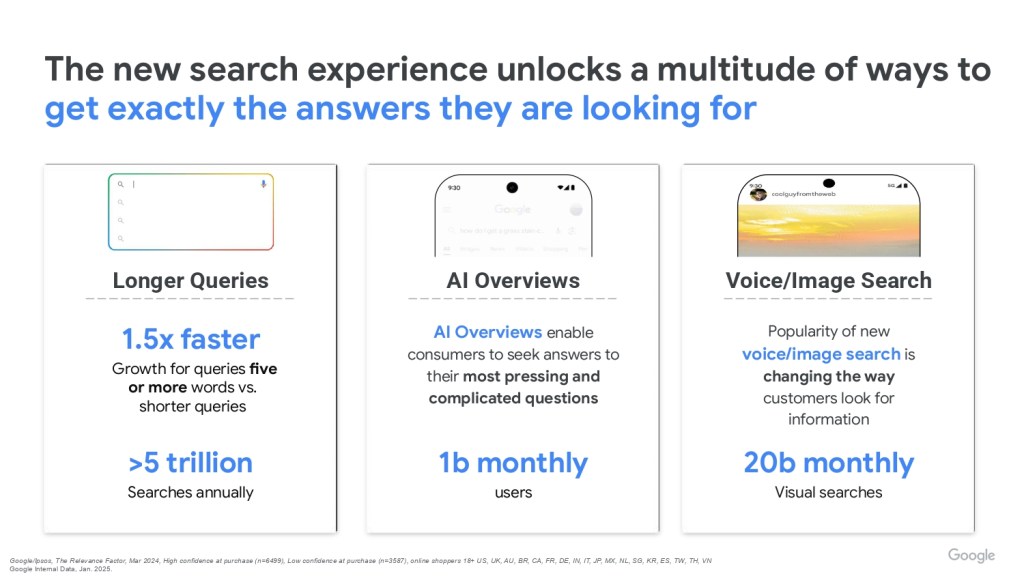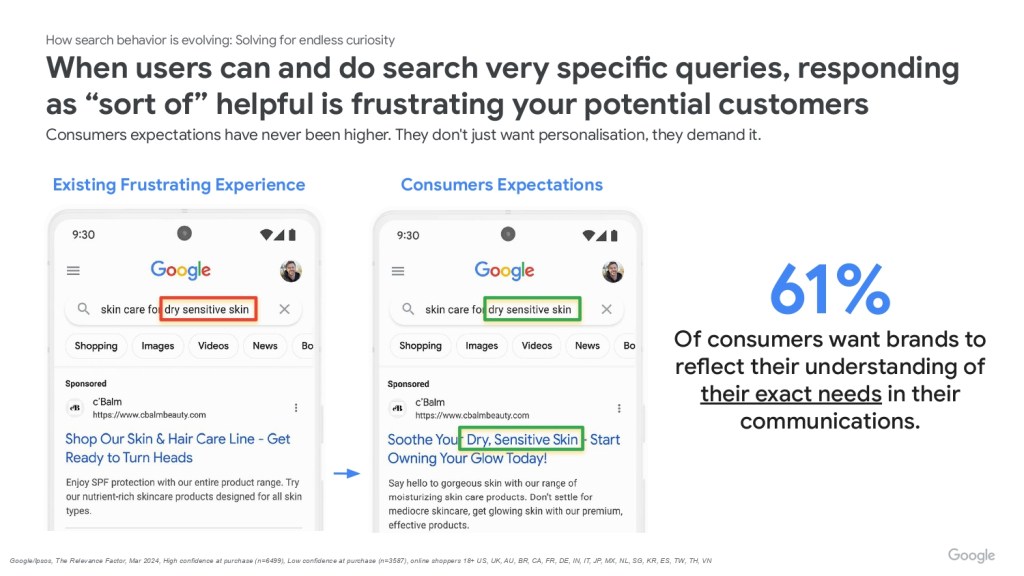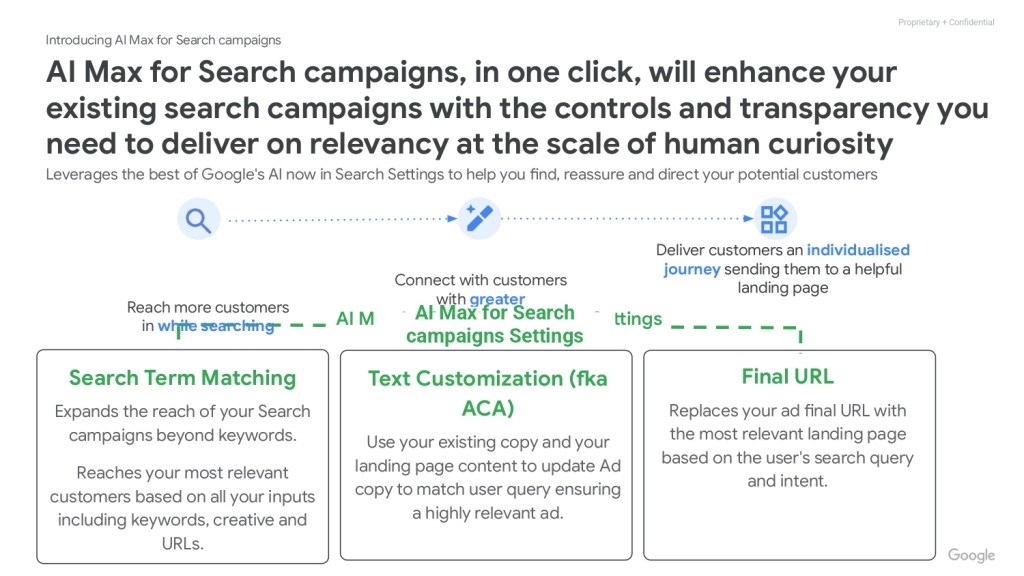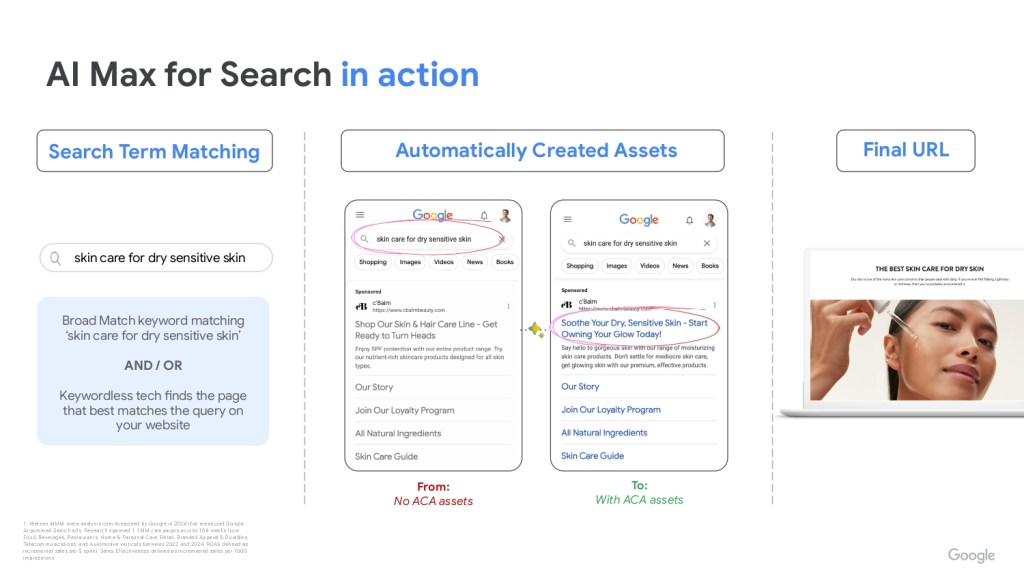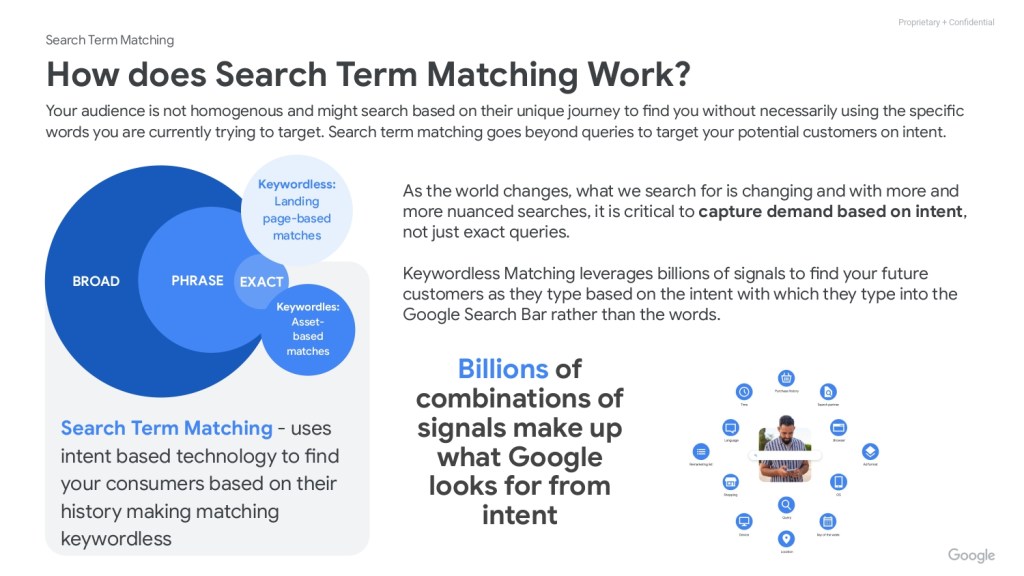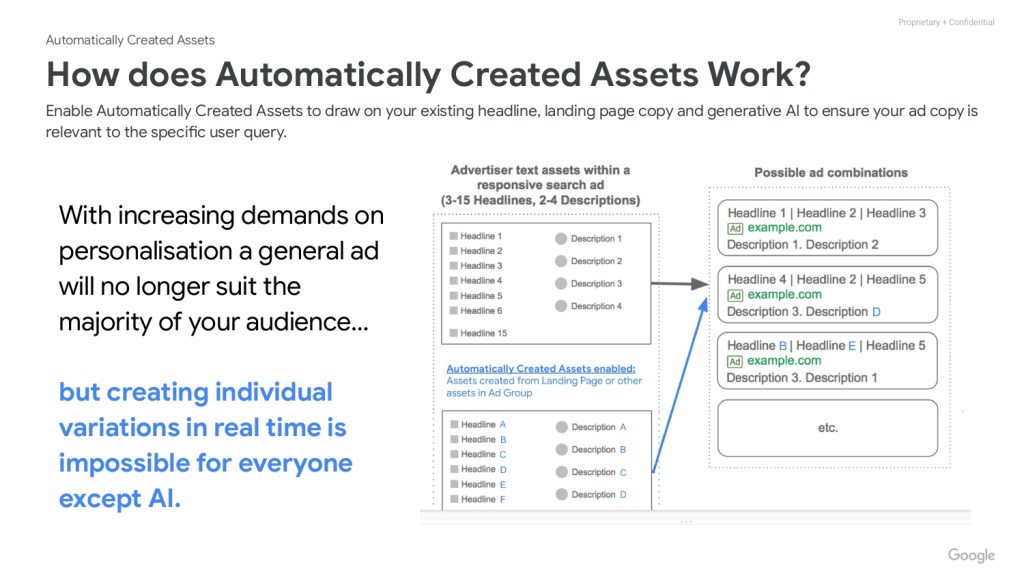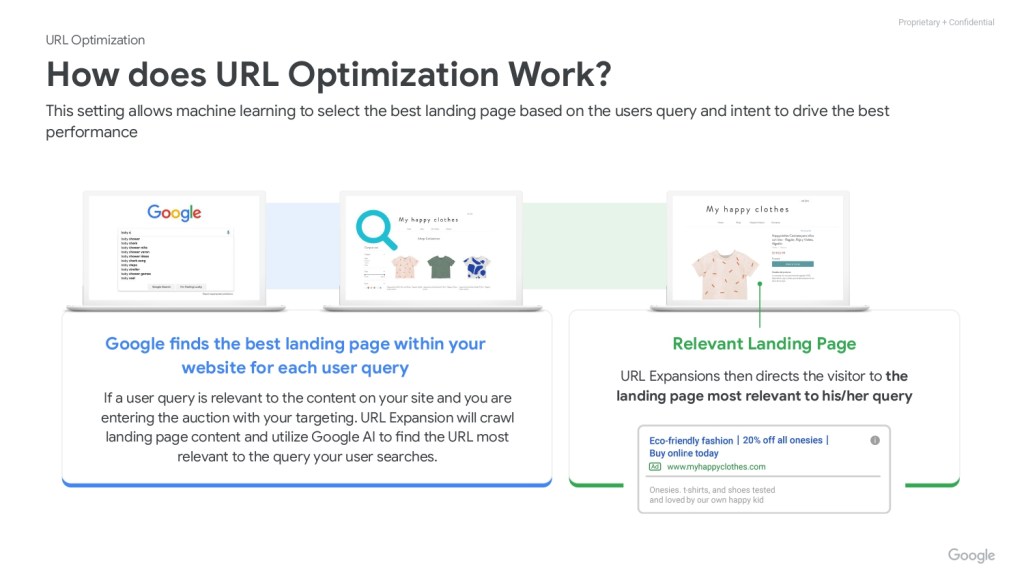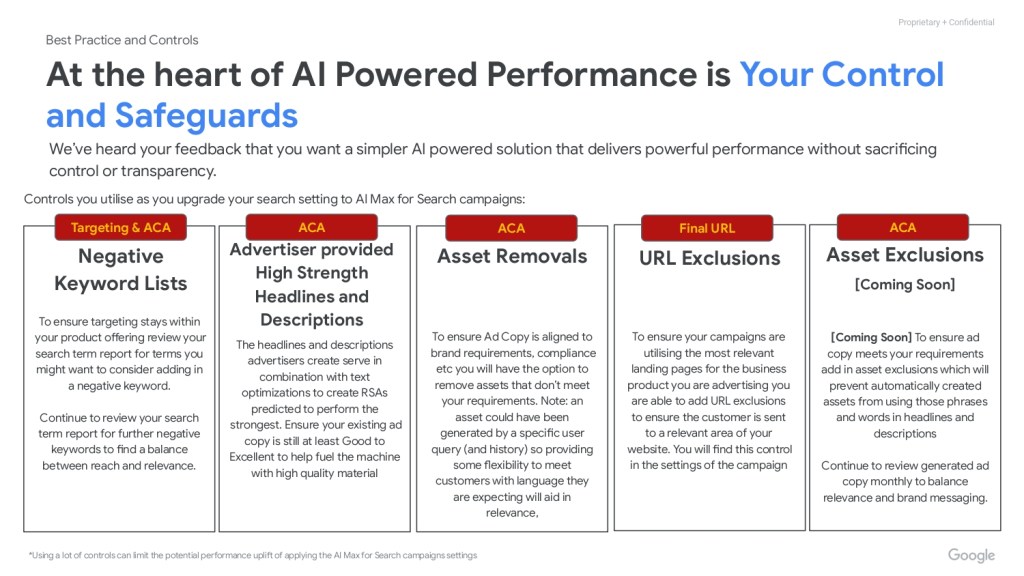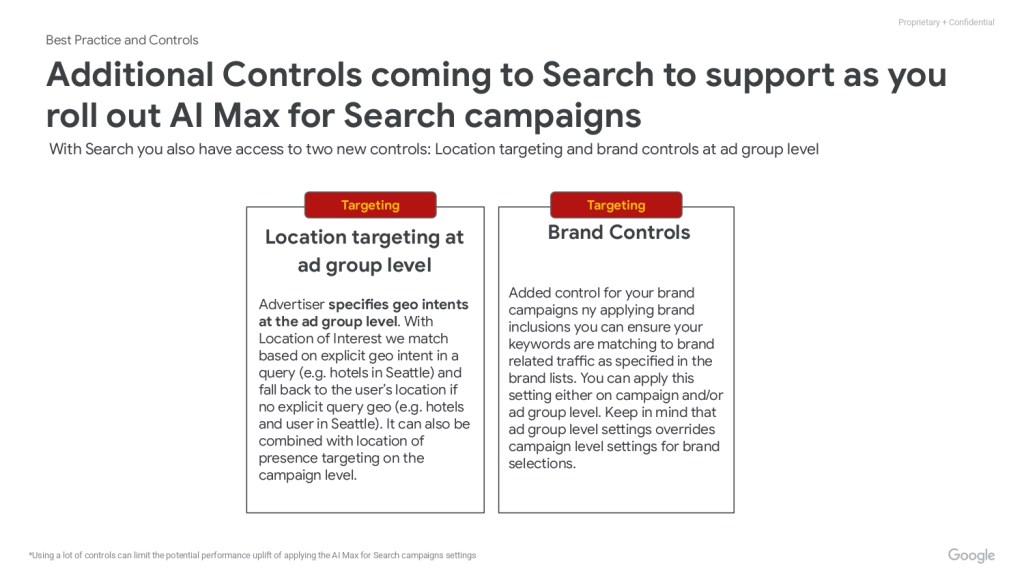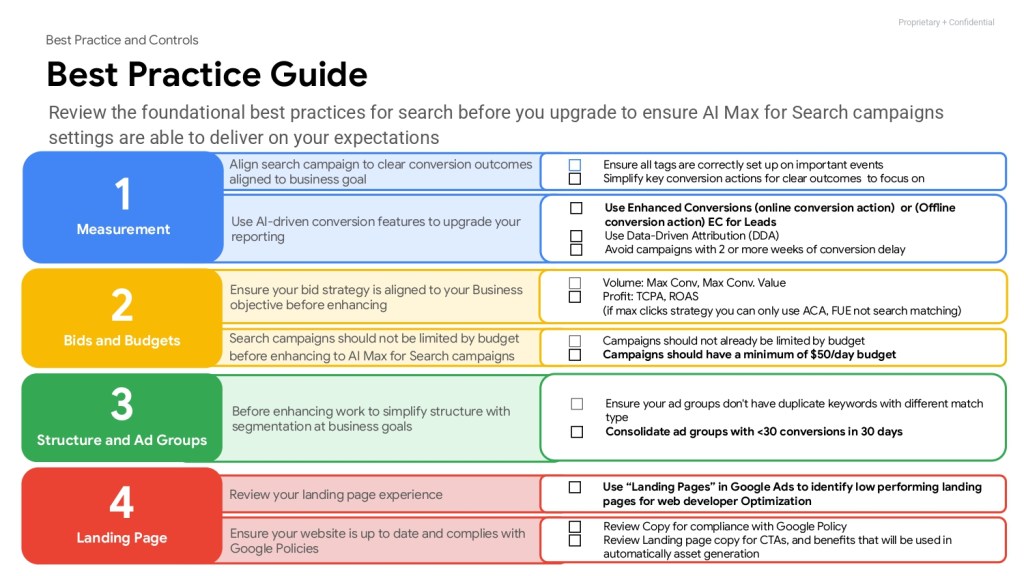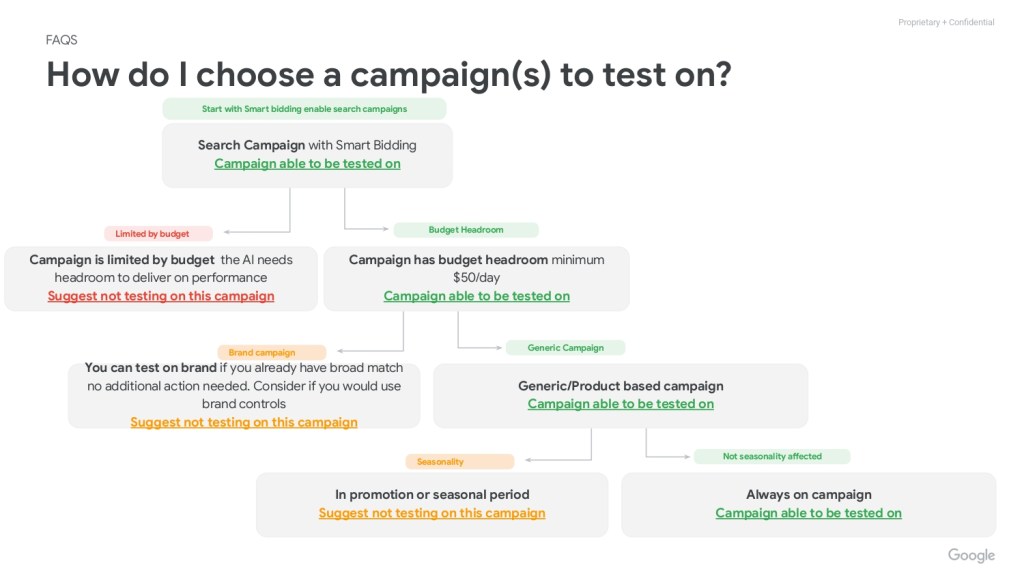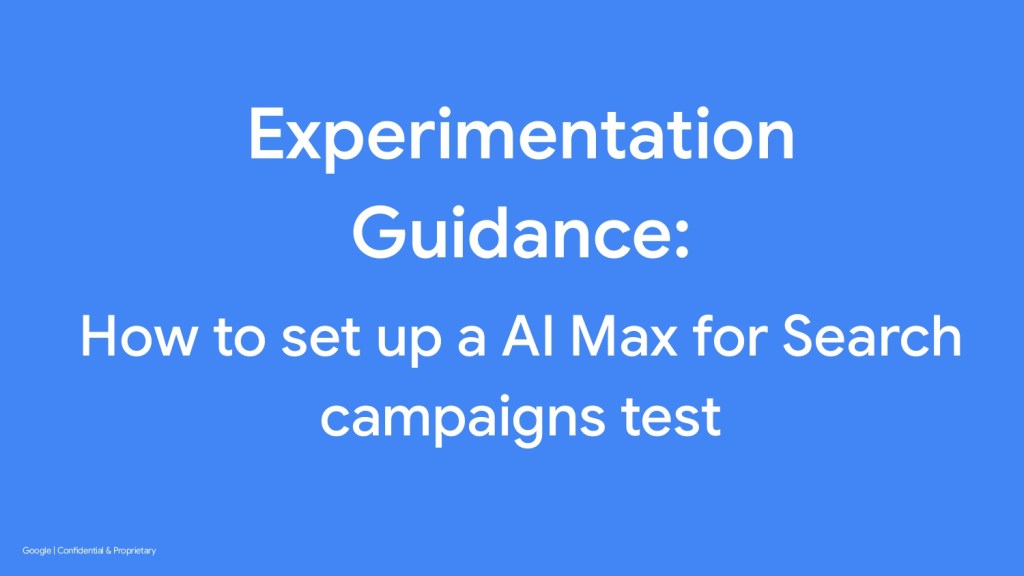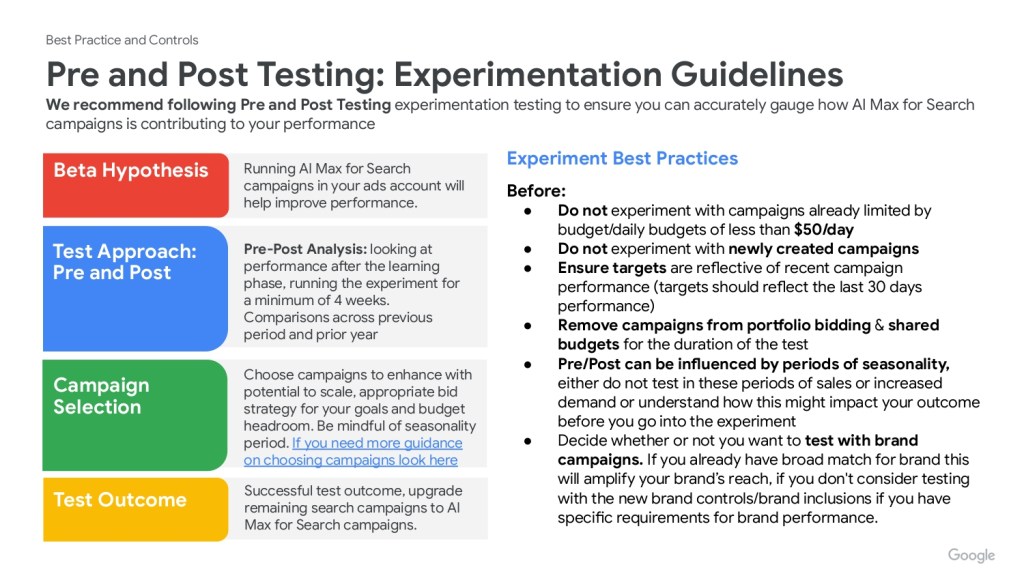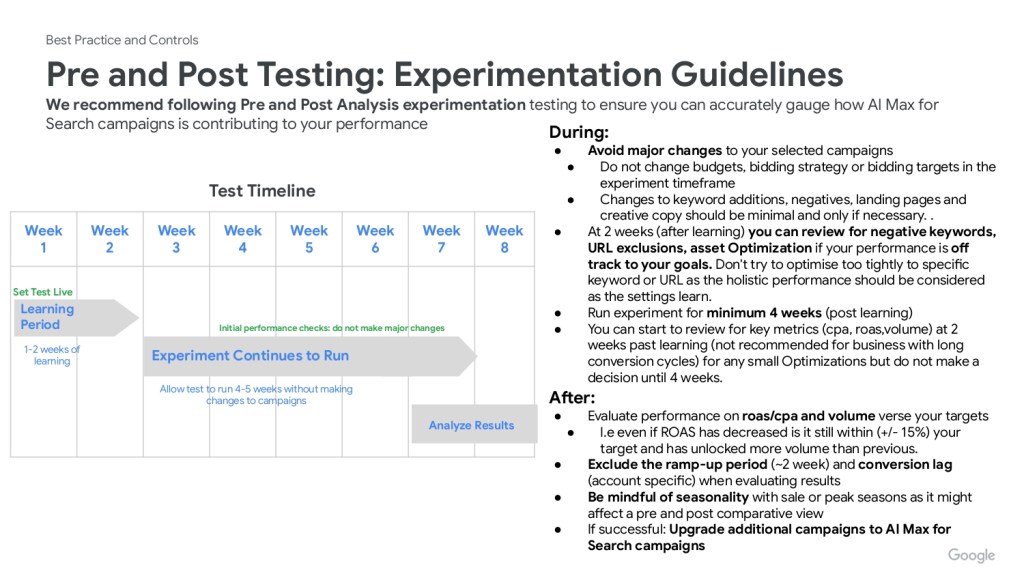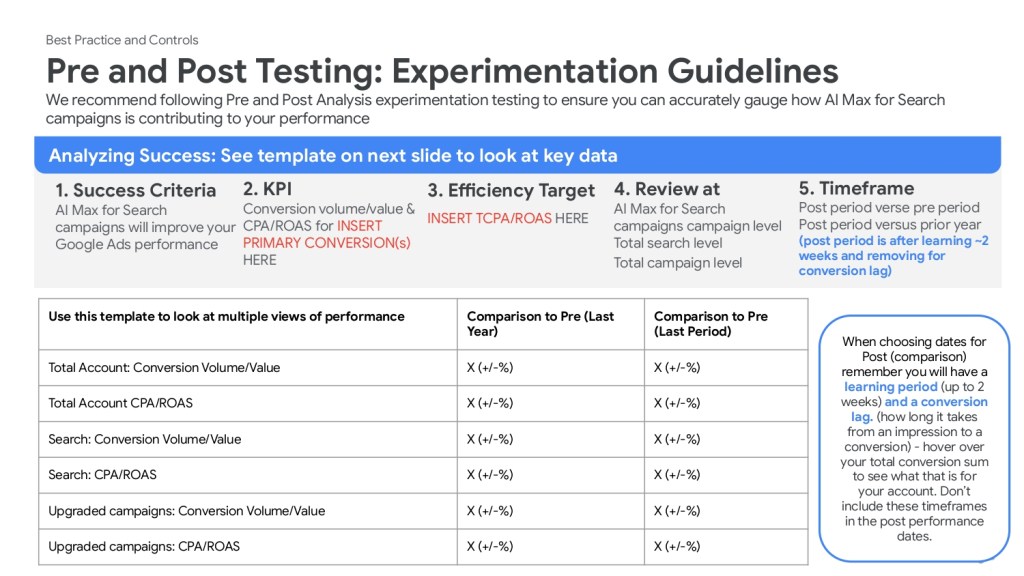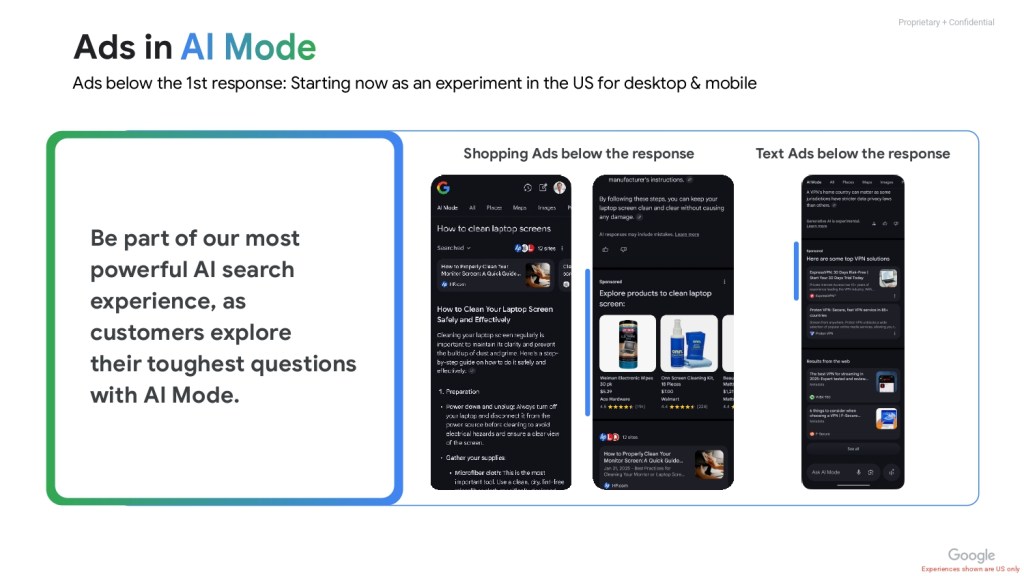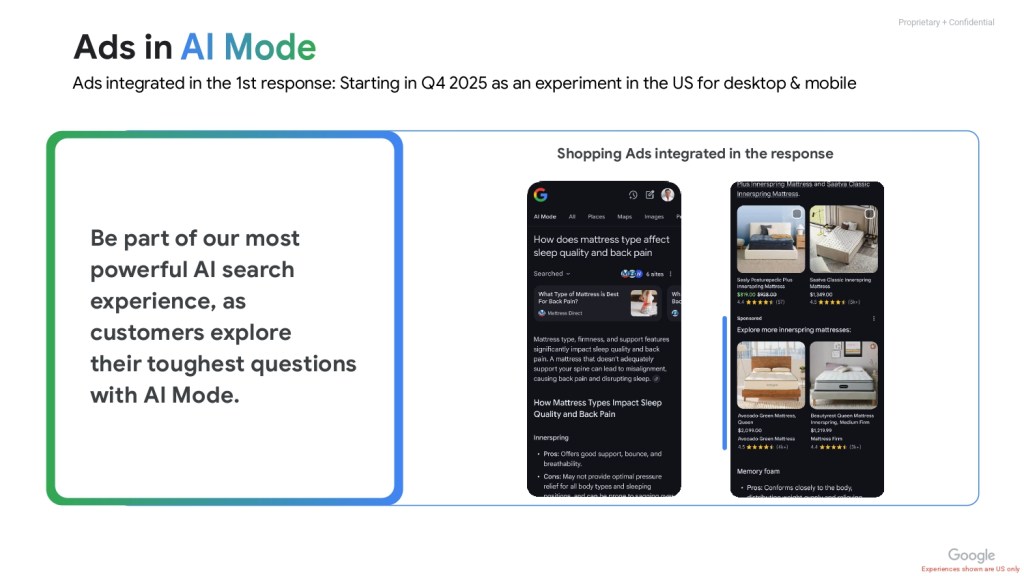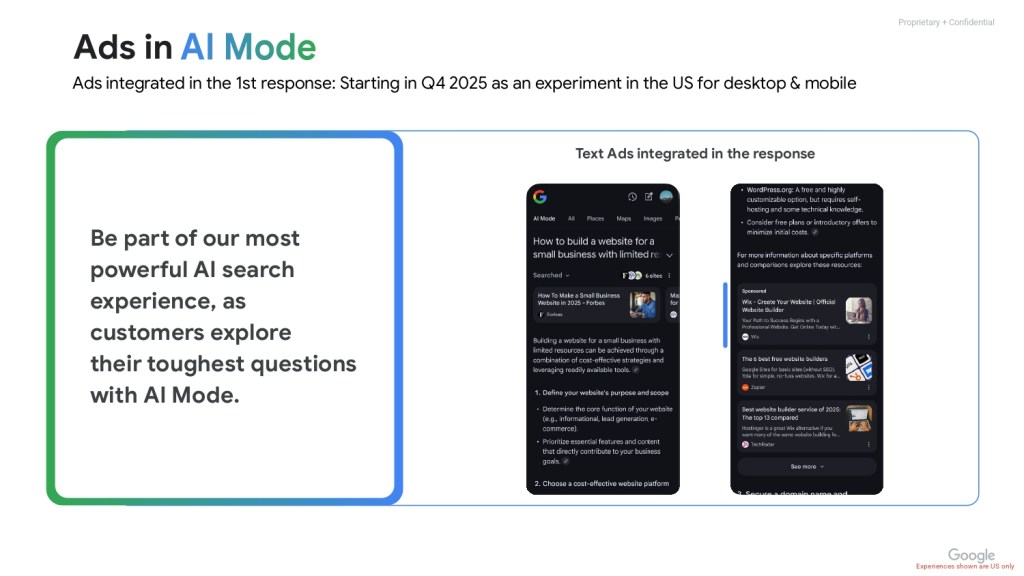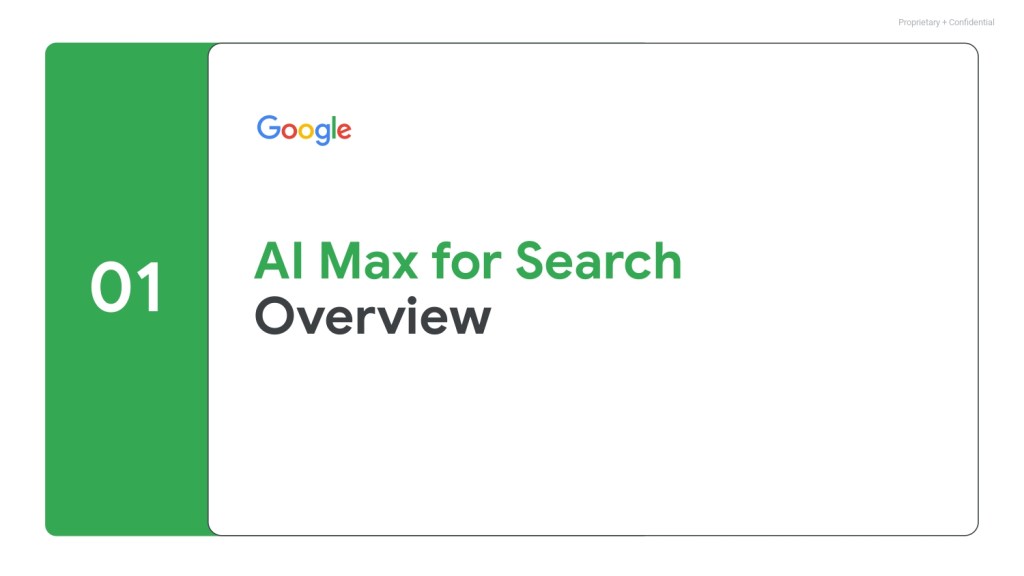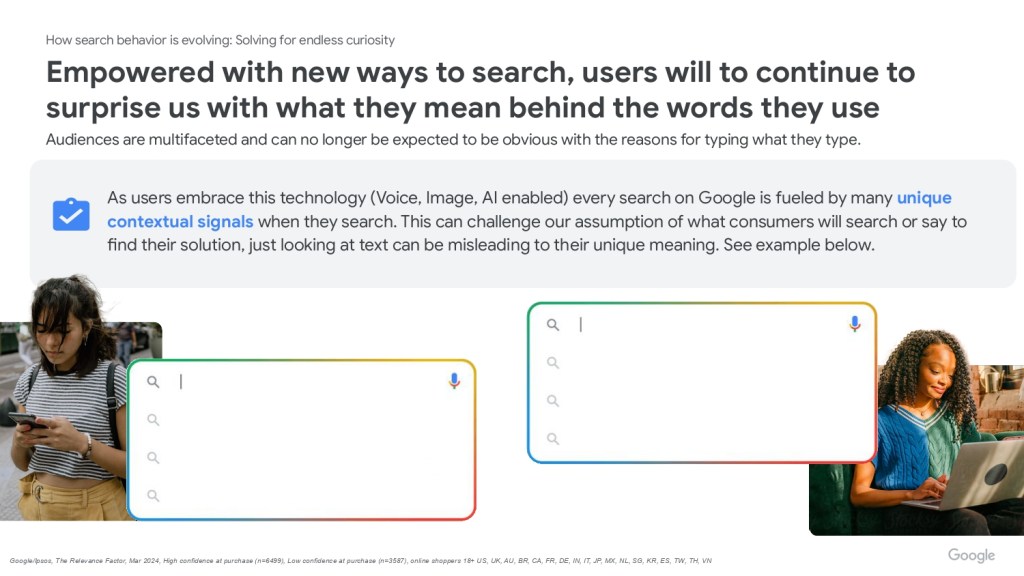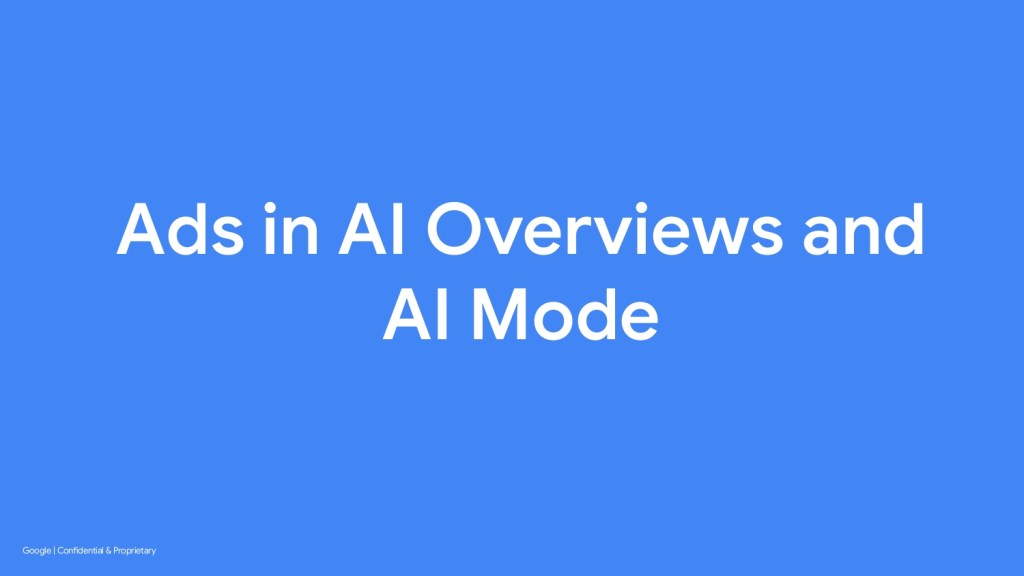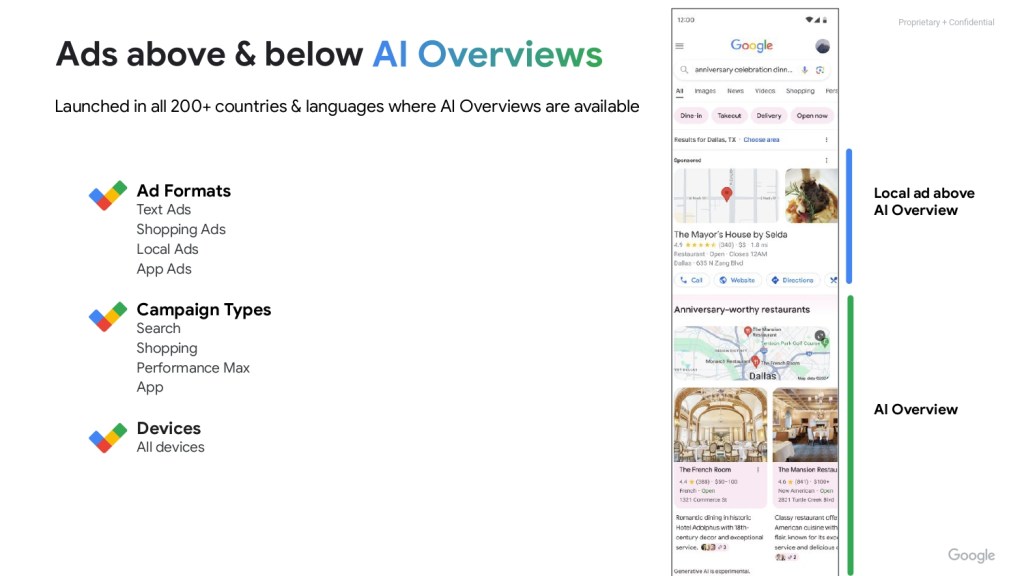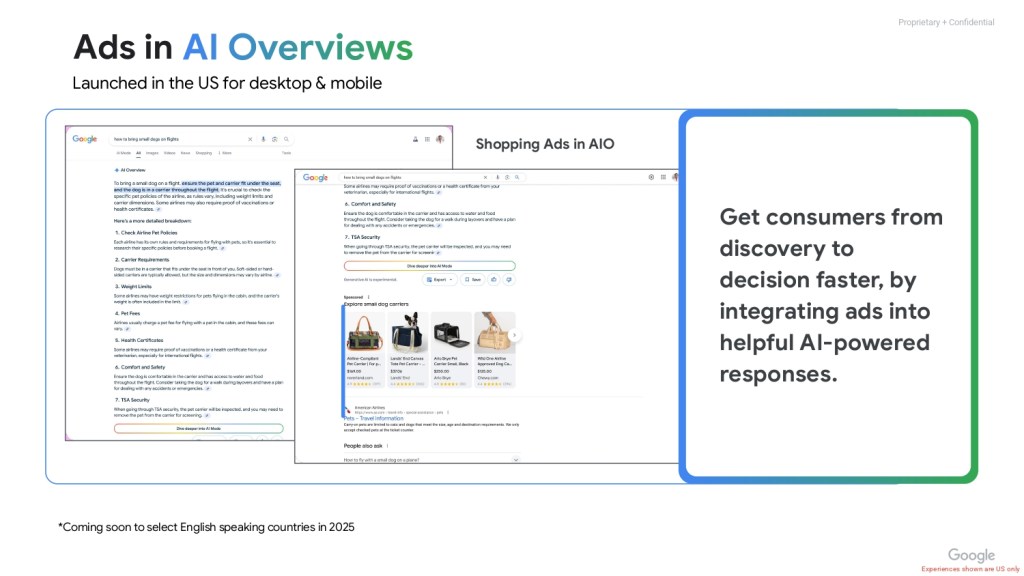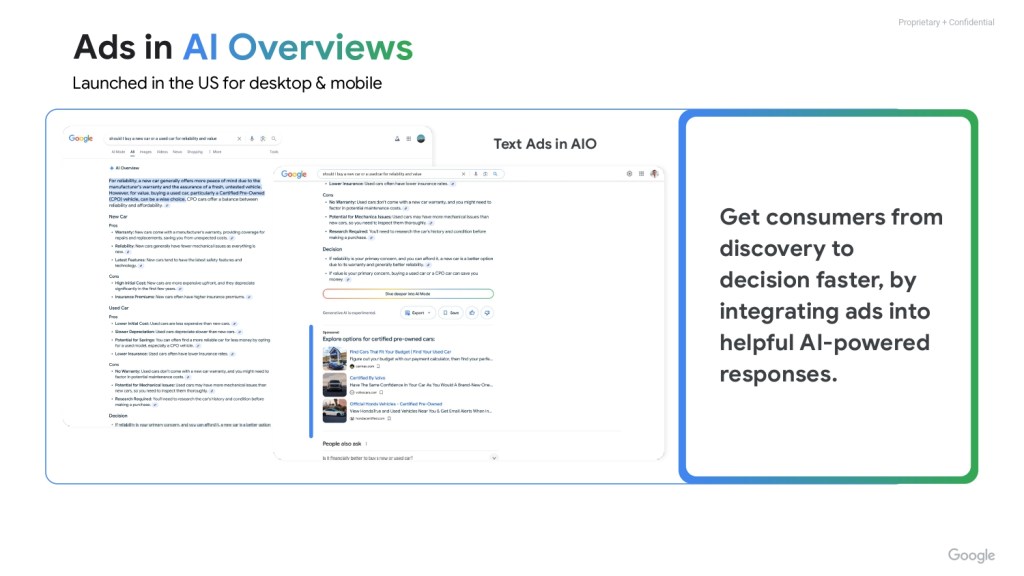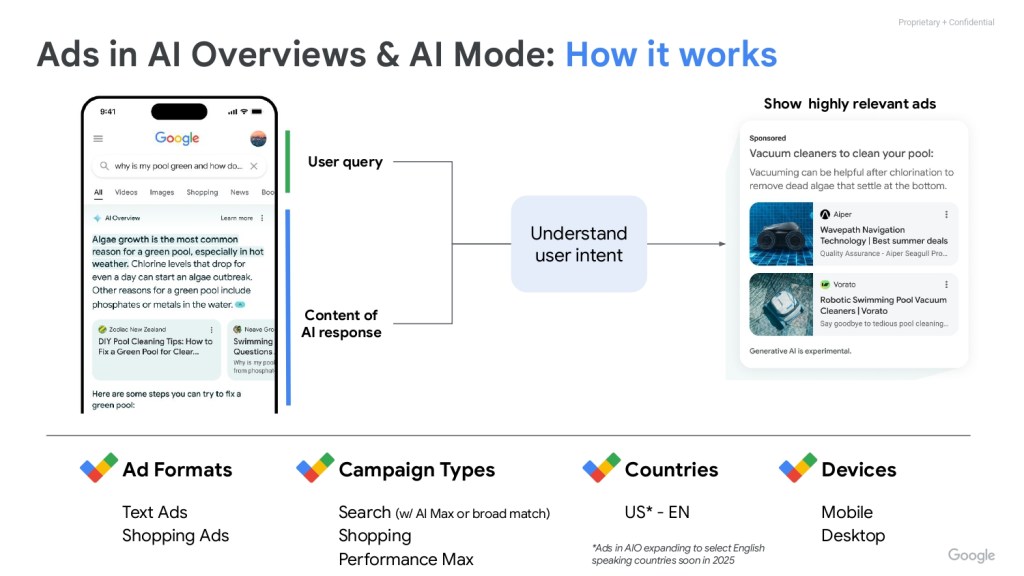Pitch deck: How Google is responding to advertisers’ concerns about AI Max

When Google started talking to marketers about AI Max — its suite of AI-powered tools to improve results for advertisers’ search campaigns — ahead of its initial roll out over summer, the platform’s 11-page pitch deck left them with more concerns than clarity.
Which is why Google has recently been circulating an updated (and detailed) 26-page pitch deck which aims to address those issues.
The deck, unsurprisingly starts off similarly to its earlier iteration, with facts and stats about search and reach across Google, before diving into how AI Max actually works.
WTF is AI Max?
Now available globally in beta across Google Ads, Google Ads Editor, Search Ads 360, and through the Google Ads API, AI Max is a suite of targeting and creative tools powered by AI, which aim to improve results for advertisers’ search campaigns.
What does it actually do? The tools basically match ads to relevant searches — including ones advertisers haven’t bid on. It can customize ad copy based on user intent as well as automatically send users to a brand’s landing page.
For a more detailed overview of the tools and why advertisers should use them, check out this story, which also includes the initial pitch deck Google used to tout the product.
What are the key issues?
One major concern from a number of advertisers has been around Google’s AI generative tools within the product.
As Chris Matheson, media manager at Markacy noted most of his clients are interested in AI Max’s functionality because it’s the fundamental component of Google Search.
“Clients are particularly concerned, and I think rightfully so, around how potentially damaging it is to their brands if they have AI running with copy, but they don’t have direct control and oversight,” he said.
What he means is, when an advertiser toggles on the AI Max optimization, which allows the product to generate headlines and copy for the campaign, clients are concerned by where and how Google has been pulling the information.
“There’s been some concern in the skincare space, for example, around clinical tests, whether it’s going to pull random clinical trials from the website and pair that with the wrong products and potentially create legal issues,” he said.
Sebastian Ellis, managing director of Ellis Digital, has had a similar experience.
“My team has noticed that AI does not fully understand sectors and niches so you have to be very careful with checking captions, links and imagery before pushing the go live button,” he said. “Quite a few times it’s [AI Max] pulled the wrong text or information — check and check again is my advice!”
Which is why Google’s deck has specifically highlighted the safeguards and additional controls it has in place, to ease any concerns around this. These include negative keyword lists, asset removals and URL exclusions.
Having reviewed the deck that was shared with Digiday, Matheson said he thinks Google has taken steps to mitigate brand or legal risk around its copy, taking a very “lightly generated approach” to generated search copy. In other words: the text is being pulled from within the brand’s own approved sources, not generated out of nothing.
“We’ve done an analysis on our end and talked with some Google reps, and it feels to us like the risk is pretty minimal based on how they’re [Google’s AI Max] pulling the copy,” he said. “There might be some light generation taking place, but not exuberant or over the top that advertisers have seen elsewhere on Meta ads generated copy, for example. So we feel reasonably confident it’s a good fit, and barring any brand risk.”
Knowing that advertisers want support before diving right in, Google has also provided a guide on what advertisers should be creating campaigns before they start experimenting with AI Max, as well as a step by step guide to pre and post analysis testing for when they do try it out. The main caveat: Google advises advertisers not to experiment with any campaigns limited by budget, or a daily budget of less than $50.
What else is Google saying?
The deck also revealed that Google is already experimenting with putting shopping and text ads below the first response in AI Mode, in the U.S. for desktop and mobile. But in Q4 2025, the platform will experiment with integrating these ads within the first response.
But concerns and new releases aside, something else advertisers would want to keep track of if using AI Max, is where their budget is actually being pushed.
Matheson said his team has noticed significant spending towards display networks in AI Max campaigns when the intentionality is supposed to be for search, though he didn’t share specific figures.
“There’s a placement / network breakdown that tells you how much money is spent on the search placements, display placements and search partners placements,” he explained. Our early read for this AI Max is, if those are enabled it has spent a pretty significant amount on display, but the entire functionality around it is supposed to be search.
In response to a request for comment, a Google spokesperson told Digiday: “AI Max is designed to increase performance for Search campaigns while giving advertisers more control over how creatives are generated and which queries trigger their ads. We see increased adoption of AI Max for Search campaigns and continue to roll out new controls like text guidelines.”
View the full deck below.
More in Marketing

For platforms, here’s what’s not going to happen in 2026
Rather than the traditional platform predictions, this is a list of what Digiday believes won’t happen next year.

Cheez-It bets on ‘Prince Cheddward’ mascot in an overcrowded sports marketing arena
To cut through sports marketing noise, Cheez-It is resurrecting Prince Cheddward and betting on nostalgia.

The anatomy of an agency chief client officer
Several major agencies have moved to appoint chief client officers to their top cohorts lately.
